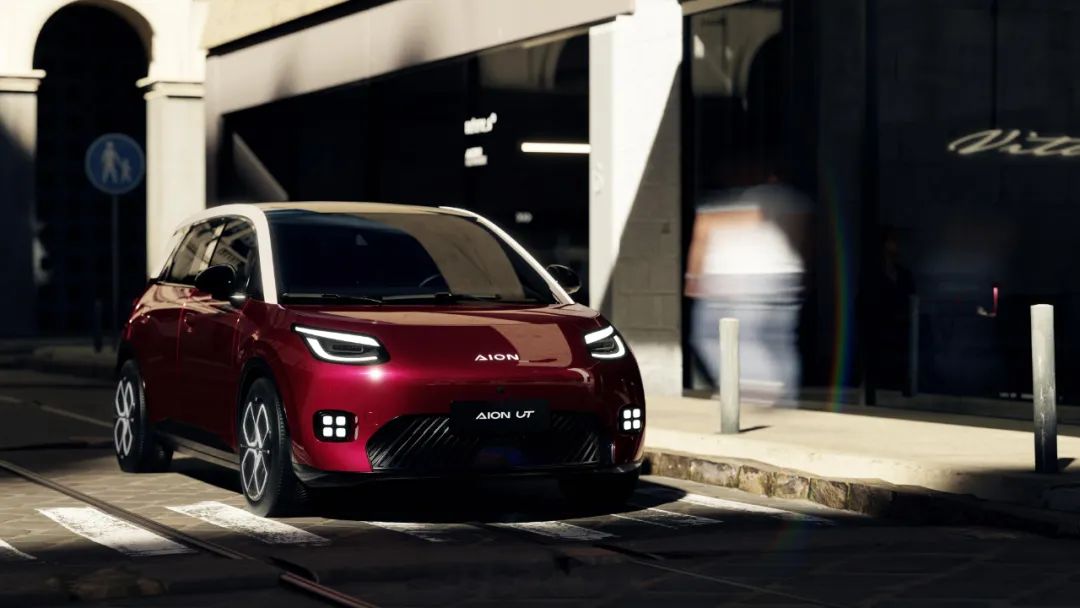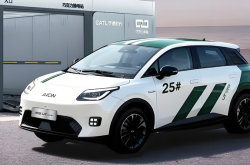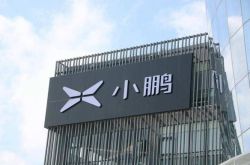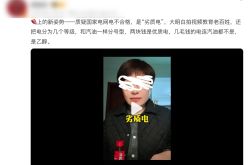“Disassembling” Aion: GAC's Challenging Path to Integration
![]() 01/20 2025
01/20 2025
![]() 589
589

The consolidation of Hyperion, Trumpchi, and Aion's marketing organizational structures underscores GAC's commitment to resource reorganization, yet integration remains an ongoing process with the ultimate aim of unifying research, production, supply, and marketing.
Sources reveal that in recent months, GAC has successfully integrated certain financial and procurement functions across its three brands, achieving positive outcomes. Now, this integration is extending into the R&D system.
The integration of sales and R&D systems poses the greatest challenge, particularly with Aion. Prior to integration, Aion's "research, production, and sales" functions had operated independently for nearly four years. Both GAC Toyota and GAC Trumpchi are now developing new vehicles based on Aion products.
Aion's future product roadmap is also fully developed and independent. After three consecutive years of failing to break into the high-end electric vehicle market, Aion is now turning to the small car segment. This year's new model, the AION UT (Parrot Dragon), is Aion's smallest electric vehicle to date. We exclusively learned that following the UT, Aion will introduce an even smaller, more affordable electric vehicle next year.
In the mid-size and larger markets, Aion will shift its strategy, offering extended-range versions alongside pure electric models. The already launched AION V (Tyrannosaurus Rex) will introduce an extended-range variant this year, and another new model, code-named AY7, will be available in both pure electric and extended-range configurations. Aion is also exploring the feasibility of a plug-in hybrid model.
Aion's independent development path has complicated the integration process. Multiple heads of GAC's R&D and marketing systems confirmed that, for now, only organizations and personnel have been combined, with each entity still focused on its respective business.
By Xing Ruifang
Edited by Mao Shiyang
Original content by AutoPix (ID: autopix)
01.
“Disassembling” Aion
Two days ago (January 13), GAC Group's three independent brands jointly held a dealer partner conference. Previously, such annual dealer conferences were held separately by Hyperion, Trumpchi, and Aion, but this year they were combined, with the three brands listed side by side.
That evening, the Hyperion brand officially released an article titled "GAC Hyperion, Setting Off Again." Subsequently, the term "GAC Hyperion" began appearing in official articles from GAC Group, the parent company.
Hyperion is a high-end luxury new energy vehicle brand nurtured by GAC Aion. An Aion representative revealed that previously, GAC internally would not refer to Hyperion as "GAC Hyperion." This change in terminology within the state-owned automaker may signal a shift in brand interpretation rights, suggesting that "Hyperion is no longer subordinate to us; it is now 'GAC Hyperion'."

▍GAC Dealer Partner Conference
Changes are also afoot within Aion's R&D center.
While there has been no official announcement of a merger at the organizational level, many Aion R&D personnel have relocated their offices from GAC Aion's headquarters in Shilou Town, Panyu District, Guangzhou, to the GAC Research Institute a few kilometers away. Even for those who remain, some corporate benefits have been redirected to the GAC Research Institute since the end of last year.
An Aion R&D head confirmed that reorganizing R&D is the general direction, but whether it will involve a direct organizational merger like the sales system remains unclear, adding that "there should be a result by May of this year."
While the integration of organizational structures is still under discussion, the integration of resources is already underway.
A source close to the GAC Research Institute revealed that several Aion vehicles that have not sold well are now being introduced to other GAC brands. For instance, the AION V now serves as the basis for at least two products, one under Trumpchi and the other under the joint venture GAC Toyota. Both projects are being managed by the GAC Research Institute, with support from the Aion R&D center.
Furthermore, Aion is attempting to leverage GAC's resources. We learned that Aion plans to develop an MPV based on Trumpchi products, with future production also taking place at Trumpchi's factory.
A GAC Research Institute representative stated that this year, GAC's independent brands will introduce around seven new models. The procurement departments of the three brands completed their merger last year and are now managed by a unified team.
These collaborations have gradually facilitated integration across various areas such as production, R&D, and procurement. However, the level of integration remains insufficient.
On the last day of 2024, GAC Group internally issued the "GAC Group Organizational Structure Adjustment Plan." After New Year's Day this year, the marketing operations of Trumpchi, Aion, and Hyperion were merged into a single organizational framework for management.
The integration of the marketing system has been completed at the organizational level, bringing significant changes. The future direction is towards integrated operations, but so far, business integration has been inadequate.
With over four years of independent operation, Aion's transition from "merging" to true integration is not straightforward. Multiple sources close to GAC Trumpchi and Aion's marketing systems confirmed that the new marketing headquarters has only combined organizational structures, with businesses still operating separately. "Aion handles Aion's business, and Trumpchi handles Trumpchi's." Besides a few senior executives, personnel below the middle level of the three brands remain relatively independent.
The integration of sales and R&D systems is particularly challenging. Compared to the merger of organizational structures, the integration of resources will be a crucial test.
02.
Aion's Strategy
On January 6 of this year, Aion unveiled a new vehicle named AION UT. Feng Xingya, general manager of GAC Aion, who had not appeared at a new vehicle launch for some time, attended the conference and described UT as "the first result of GAC Group's integrated operations of independent brands" and "the first vehicle of the Panyu Initiative."
The small electric vehicle UT is Aion's most affordable model to date, with a pre-sale price ranging from 89,800 yuan to 109,800 yuan. An Aion representative revealed that by the time it goes on sale in February this year, the pricing of this vehicle is expected to drop by several thousand yuan.
We learned that Aion began developing UT from late 2022 to early 2023, well before the announcement of the "Panyu Initiative." Most of the product development was independently completed by Aion. The miniaturization of electric vehicles represents a new attempt by Aion to address growth challenges, having previously focused on the high-end market.

▍AION UT Parrot Dragon
From 2021 to 2023, with the AION S and AION Y, Aion became a significant player in the ride-hailing market, achieving sales growth rates of 119%, 126%, and 77% respectively over the three years, quadrupling annual sales from 120,000 to 480,000 vehicles in 2023. That year, Aion was the second-largest pure electric vehicle manufacturer in China by sales, trailing only BYD.
The short-lived prosperity of the ride-hailing market masked several issues, such as brand building and responsiveness to consumer market demand. Starting from the second half of 2023, problems began to surface, with a decline in ride-hailing demand ultimately leading to a 21.9% year-on-year drop in Aion's annual sales to 375,000 vehicles in 2024.
Aion has launched multiple vehicles to demonstrate its versatility beyond ride-hailing services. In 2022, as NIO and Li Auto gained momentum, GAC Group identified the high-end market as the opportunity for electric vehicles. Aion also wanted a piece of the pie, relaunching the AION LX with a pricing range of 280,000 to 460,000 yuan.
This venture was a failure. Starting from 2023, sales of this vehicle rarely exceeded 100 units. In the same year, Aion also introduced a new electric vehicle brand, "Hyperion," which achieved annual sales of about 17,000 vehicles in 2024, reaching only one-third of the annual target of 50,000 vehicles.
With its expansion into the high-end market unsuccessful, Aion adopted a more flexible product strategy. Among its new products in the next two years, Aion's pure electric lineup will include multiple small cars, while it will also venture into markets beyond pure electric vehicles, attempting to expand sales in the mid-size car market with extended-range vehicles.
We exclusively learned that following the UT, Aion will introduce an even smaller pure electric vehicle, expected to enter mass production (SOP) and be launched next year at Aion's Changsha factory. Additionally, the AION V will introduce an extended-range version this year, and another new model, code-named AY7, will be available in both pure electric and extended-range configurations, with a projected launch at the Shanghai Auto Show.
Hyperion's focus is also on extended-range vehicles, including the already launched pure electric Hyperion HT and the Hyperion HL, planned for launch this year and targeting models like Li Auto's L7 and L8. Both vehicles will offer extended-range versions.
Even excluding Hyperion, Aion's product planning is comprehensive and spans several years of execution. For GAC to reintegrate Aion, which had been spun off, without disrupting its business while truly enhancing efficiency, is a formidable task.
03.
GAC's Integration Challenge
During the Guangzhou Auto Show in mid-November last year, GAC Group announced a three-year "Panyu Initiative" with the core objective of activating its independent brands. The goal is for independent brands to account for more than 60% of the group's total sales by 2027, aiming for annual sales of 2 million independent brand vehicles. This scale is equivalent to GAC Group's total sales in 2024, which are currently primarily contributed by joint ventures such as GAC Honda and GAC Toyota, with the three independent brands selling only 790,000 vehicles, accounting for just 40%.
At the beginning of the month when the goal was announced, GAC relocated its group headquarters from the CBD of Zhujiang New Town, Tianhe District, Guangzhou, to Panyu Automobile City. Panyu Automobile City is where GAC's independent brands are concentrated, with GAC's new headquarters situated next to the GAC Research Institute and GAC Trumpchi, and only a few kilometers away from Aion. GAC executives stated that relocating the group headquarters from the CBD to the suburbs was a strategic move to command from the front lines.
Like other state-owned automaker groups, GAC Group previously adopted a strategic control approach over its vehicle companies, rarely involving itself in decision-making related to actual business operations. Now, facing numerous challenges in its transformation, group executives from companies like Dongfeng and SAIC are increasingly involved in the operations of vehicle business units. For example, starting in December last year, Chen Bin, deputy general manager of FAW Group, began concurrently serving as general manager of FAW-Volkswagen.
GAC's objective is clear: group executives must strengthen their command over independent brands.

▍Hyperion HL
GAC has three independent brands, placed within two companies, with Aion being the most autonomous.
At the 2020 Guangzhou Auto Show, the Aion brand announced its separation from GAC Passenger Vehicles (now the predecessor of GAC Trumpchi) and began independent operations. A year later, in 2021, the Aion R&D center was separated from the GAC Research Institute system and incorporated into Aion. At this point, in form, GAC Aion became a new energy vehicle enterprise with independent capabilities in "production, sales, supply, and research," nurtured by GAC Group.
At that time, pure electric vehicle enterprises were favored by the capital market, and Aion also had plans to go public. Starting in 2022, GAC Group completed the mixed-ownership reform of Aion to pave the way for an independent listing. However, Aion's listing plans were eventually postponed from 2023 to 2024, with no tangible results to date. The market environment has changed, and the likelihood of a listing in the coming years is only decreasing.
Now, Aion's sales have declined from their peak, and GAC is also facing challenges. In 2024, GAC Group's sales dropped by more than 20% year-on-year, marking the lowest level in the past five years. GAC's profits are also under pressure. In the first three quarters of 2024, the company's operating revenue was 74.04 billion yuan, down 24.18% year-on-year; net profit attributable to shareholders was 120 million yuan, a sharp decline of 97.34%.
The industry trend has shifted. Like Geely, SAIC, and Changan, starting with the "Panyu Initiative" in November last year, the reintegration of research, production, supply, and marketing resources has become the general direction for GAC Group. Maintaining a fully independent Aion is no longer conducive to improving integration efficiency.
An Aion representative told us that GAC still intends to maintain Aion's independence to the greatest extent possible. However, the more pressing issue now lies with GAC itself. Aion's future is intricately linked to GAC's future.
This is original content by AutoPix (autopix)
Unauthorized reproduction is prohibited





